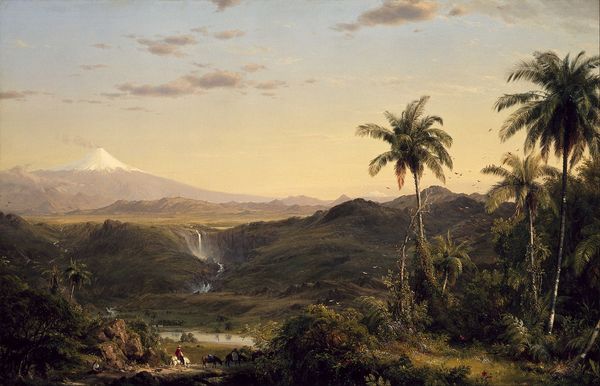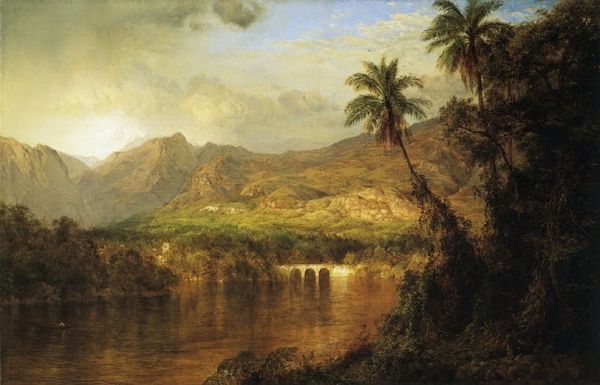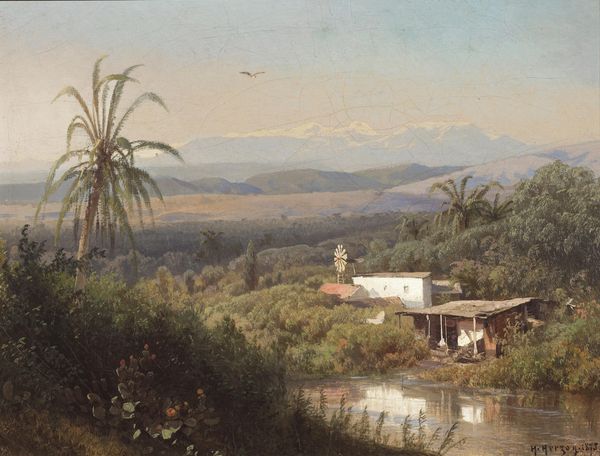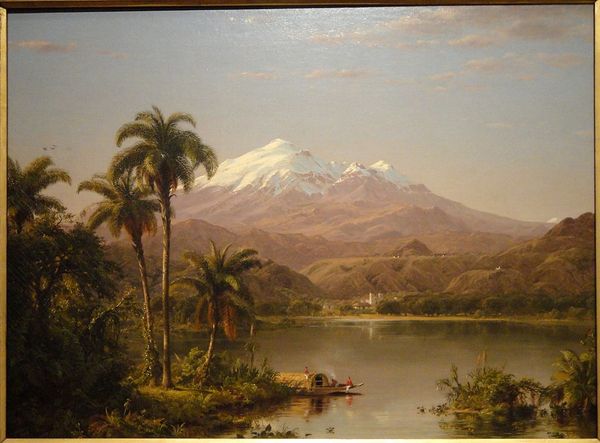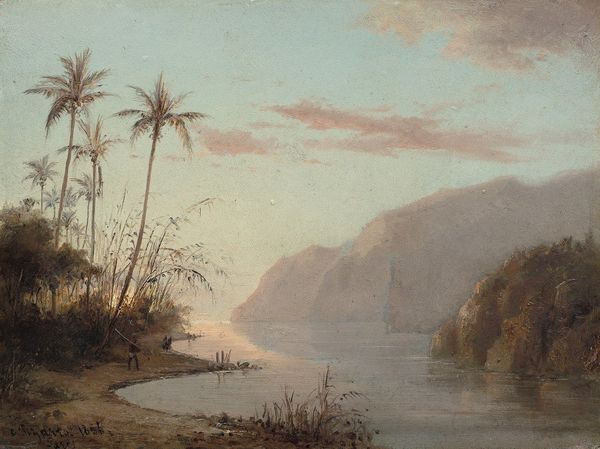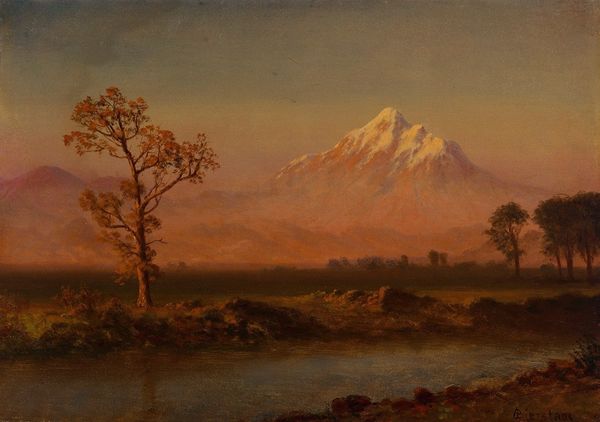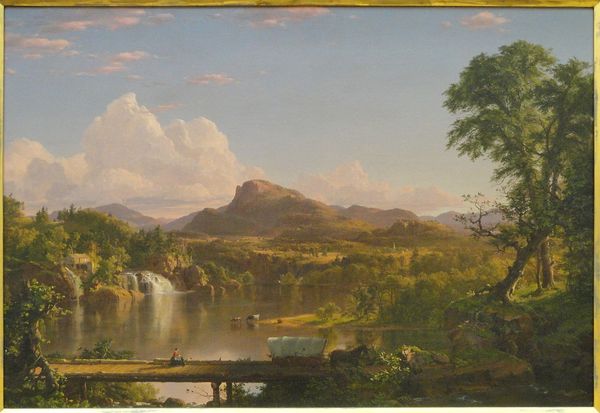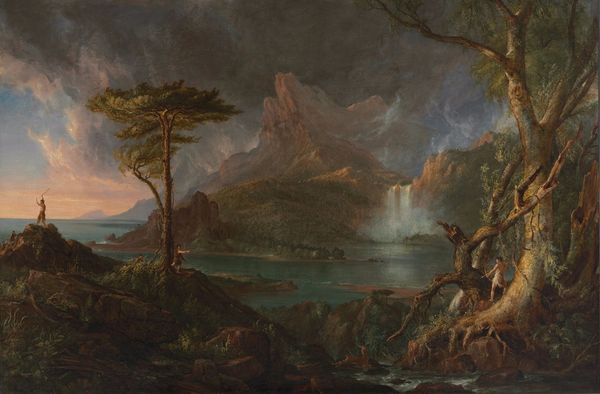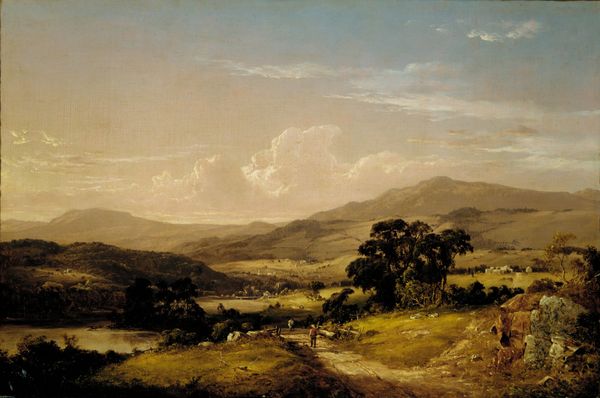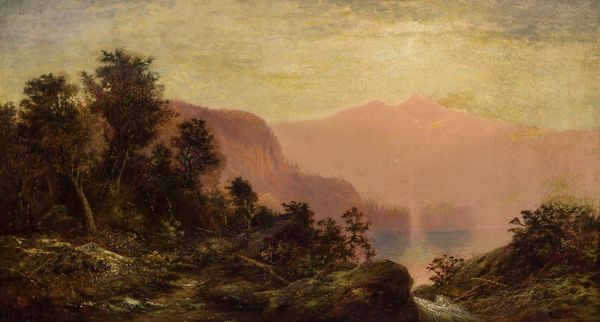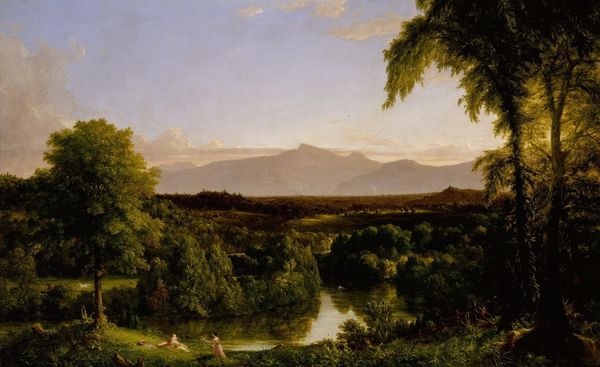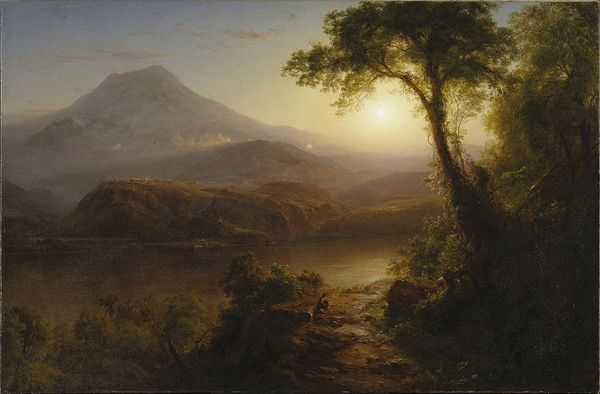
Dimensions: 62.2 × 92.7 cm (24 1/2 × 36 1/2 in.)
Copyright: Public Domain
Curator: Frederic Edwin Church's "View of Cotopaxi," created in 1857, greets us. It's a sublime rendering, a fusion of landscape, Romanticism, and realism—an oil-on-canvas spectacle that epitomizes the Hudson River School's grand ambitions. Editor: It's beautiful, yes, but there's an unsettling juxtaposition here. That majestic, snow-capped volcano looming over what seems like untouched tropical paradise… it hints at a tension between idealization and impending disruption. Curator: Church traveled extensively to South America, driven by Alexander von Humboldt's ideals of scientifically exploring and artistically representing the natural world. He saw in Cotopaxi not just a mountain, but a symbol. Mountains have long represented a powerful reaching between Earth and sky and an anchor to the culture of the indigenous peoples in this landscape. Editor: And yet, the scene also feels charged with the imperial gaze. A 'discovery' narrative embedded within the representation. It’s easy to overlook the people actually living within this space. The indigenous communities have been so minimized that you may think the two people are actually garden statues. Curator: That may very well be one aspect we need to remember in its historical setting. Think of the volcano as the axis mundi or world axis—linking different planes of existence—spiritual, earthly, human. The river below, perhaps a literal and metaphorical journey through life. These are profound symbols with long roots, adopted within a Romantic understanding. Editor: But Romanticism often served the project of nationalism and colonialism by essentializing “untouched” landscapes that were, in reality, actively cultivated and inhabited by people being actively oppressed. The absence speaks volumes and this work promotes a subtle and symbolic erasure of complex historical realities. Curator: Perhaps. But doesn't the grandeur still evoke a sense of awe that can transcend the historical circumstances of its creation? The human presence, small as it is, adds scale and encourages contemplation… It whispers of humanity’s small role. Editor: It’s more about being awake to the underlying structures and not letting this pass by because of a feeling of grand aesthetics. These paradises do not come without the deep impact of exploitation of people and landscape. We must recognize both. Curator: I agree completely. Nuance and criticality enhance our understanding and prevent simplistic consumption. A powerful work like this encourages these discussions to persist! Editor: Yes, and by placing this painting in conversation with its sociopolitical contexts, hopefully we encourage critical analysis that doesn’t remove or devalue aesthetic value.
Comments
No comments
Be the first to comment and join the conversation on the ultimate creative platform.
